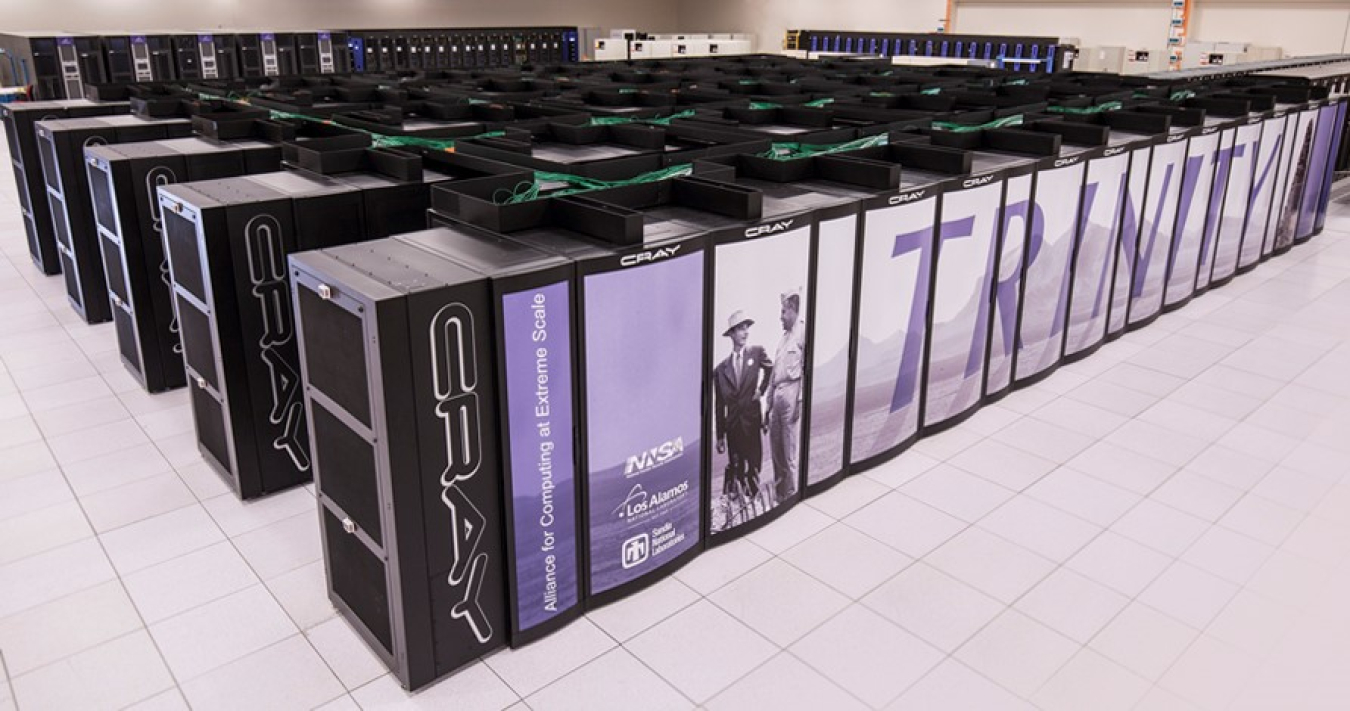All three of NNSA's National Laboratories were honored on the latest Top500 list of the world's fastest supercomputers.
National Nuclear Security Administration
December 3, 2020
As we celebrate the 20th anniversary of NNSA, the Nuclear Security Enterprise remains at the cutting edge of advancements in science, technology, and engineering. In particular, the achievements made in the field of supercomputing have been recognized on a global level. The Top500 list, a biannual ranking of the world’s 500 most powerful supercomputers, recently identified both NNSA and the Department of Energy (DOE) for many of the top-ranking spots. NNSA and DOE have each had systems ranked on the list since 1993, the year of its inception.
Multiple supercomputers at NNSA’s National Laboratories support the stockpile stewardship mission, which ensures a safe, secure, and effective nuclear stockpile without the use of nuclear explosive testing. Allowing for assessment of the current stockpile and predictive capabilities and design work for the future, this is accomplished through highly complex simulations, which integrate modern experimental data and the legacy data gained from past explosive testing. Supercomputing resources also contribute to NNSA’s nonproliferation and counterproliferation missions.
While NNSA’s Labs have always worked on medical breakthroughs, this year the importance of the Enterprise’s computing resources have come into play specifically to combat the COVID-19 pandemic, supported by the Coronavirus Aid, Relief, and Economic Security (CARES) Act. In addition to contributing powerful systems to the COVID-19 HPC Consortium fighting the virus, Lab experts have shown significant progress in epidemiological modeling , N95 respirator mask reuse testing , and improved vaccine research .
The 56th edition of the Top500 list was published November 16, 2020, and NNSA’s most impressive achievement remains the Sierra supercomputer at Lawrence Livermore National Laboratory (LLNL), which holds third place worldwide for computing speed. In fact, LLNL has more systems ranked in the global top 100 list than any other institution, with Lassen in 17th place, new addition Ruby in 79th place, and Magma in 94th place. Two more computing clusters, Jade and Quartz, round out the Livermore accomplishments in 134th and 135th place.
The Trinity supercomputer at Los Alamos National Laboratory (LANL) is now in 13th place worldwide. Though it debuted in the 7th place spot only three years ago, its replacement system, Crossroads , is currently in development and scheduled for deployment in 2022. Grizzly, another LANL system, is in 449th place on the list.

Sandia National Laboratories (SNL) holds four spots on the Top500 list, with the Manzano system in 69th place, Attaway in 125 th, Astra in 281st and Eclipse in 486th.
With 12 high-performance computing systems achieving this international milestone, NNSA is not done shaking up the Top500 list just yet. In partnership with DOE, the biggest supercomputing project to date is currently underway at LLNL as the United States pursues exascale computing . The 2023 exascale-class system, El Capitan , will be capable of at minimum 2 quintillion calculations per second – far beyond the petascale-class systems leading the current Top500.
NNSA looks forward to another 20 years of accelerating high performance computing and strengthening our Nation through nuclear security. Learn more about our mission to maintain the nuclear stockpile here.

